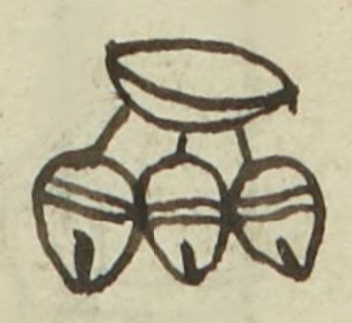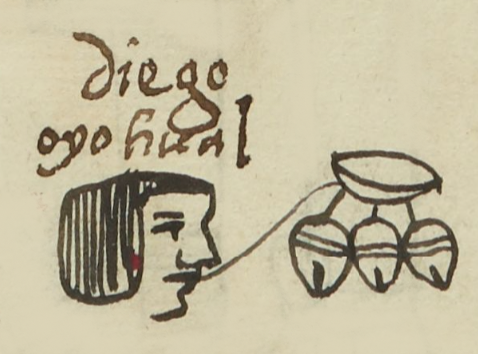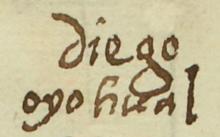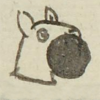Oyohual (MH495v)
This black-line drawing of the simplex glyph for the personal name Oyohual (from oyohualli, "Jingle Bells," a leg bell worn in dancing, sometimes by warriors). Oyohual is attested here as a man’s name. The glyph shows a frontal view of three hanging bells with a double-horizontal line across their middles and an opening at the lower end for the sound to escape. The three bells are hanging by strings or wires from a device at the top-center of the glyph.
Stephanie Wood
The Codex Mendoza (below) does capture the emergence of sound from a bell such as this. Most bells in this collection are called coyolli rather than oyohualli. The example of the personal name Tzilin, from the verb "for a bell to ring," shows more of a European style bell. This is from the Matrícula de Huexotzinco (below).
diego
oyohual
Diego Oyohual
Stephanie Wood
1560
Jeff Haskett-Wood
jingle bells, suenan, metales, cascabeles, pinjantes, campanas, campanillas, nombres de hombres

oyohual(li), jingle bell, or a leg bell worn by dancers/warriors, https://nahuatl.wired-humanities.org/content/oyohualli
Campanilla o Cascabel
Matrícula de Huexotzinco, folio 495v, World Digital Library, https://www.loc.gov/resource/gdcwdl.wdl_15282/?sp=70&st=image
This manuscript is hosted by the Library of Congress and the World Digital Library; used here with the Creative Commons, “Attribution-NonCommercial-ShareAlike 3.0 License” (CC-BY-NC-SAq 3.0).










